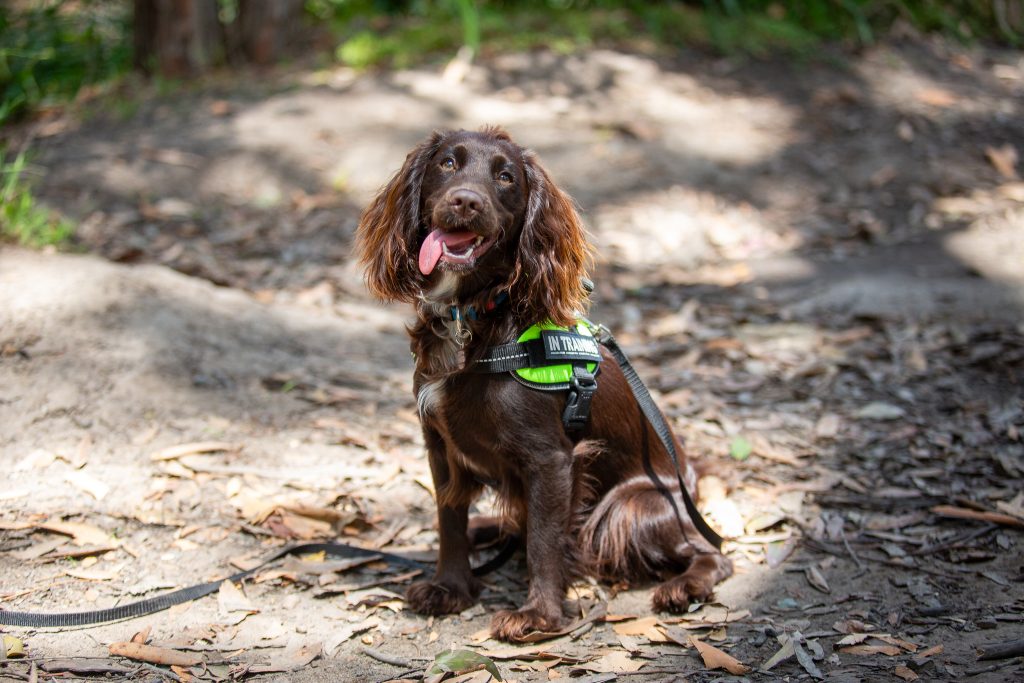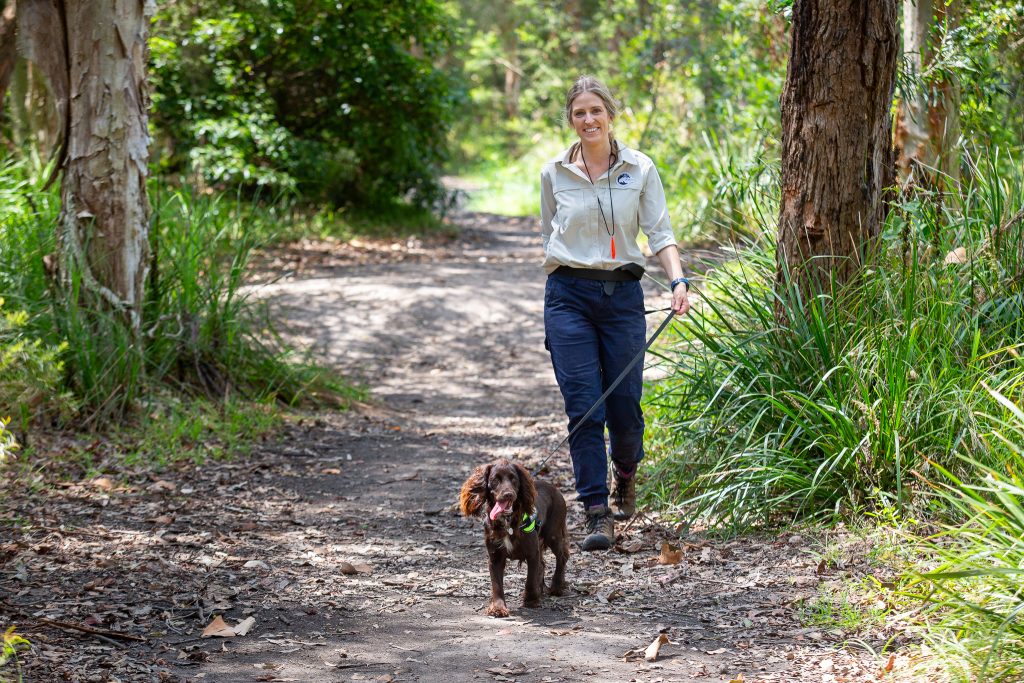
An Australian-first is being used in Lake Macquarie to track down an invasive weed.
Two sniffer dogs – Daisy the cocker spaniel and Henry the border collie – have undergone intensive training to detect the invasive Chinese Violet weeds in areas of bushland.
The Chinese Violet weed is fast growing and forms sprawling mats that smother and outcompete native plants and crops making it difficult for them to survive.
Natural Assets Coordinator Dominic Edmonds said Chinese violet infestations occurred across the Hunter, North Coast and Greater Sydney regions, but most were concentrated around Port Stephens, Newcastle and Lake Macquarie.
“Those mats smother and outcompete native plants and crops, making it difficult for them to survive. It can also reduce food and shelter for native animals.”
While large infestations are easy to spot, new outbreaks can sometimes be hidden amongst the scrub and underbrush, and that’s where Daisy and Henry come into the picture.
“It’s a case of literally nipping the problem in the bud,” Mr Edmonds said.
“The dogs have an incredible sense of smell and can detect a single specimen of this weed in a huge area, and they can do it with minimal disturbance to the surrounding environment.”

Once detected, Council crews can eradicate the weed and monitor the area to ensure there are no further outbreaks.
The work is being undertaken by locally based company Insago Environmental, a specialist conservation detection dog company.
This project is the first time in Australia that sniffer dogs have been used to track down the Chinese violet.
Indago Environmental director Naiomi Finlayson said painstaking time and effort went into training the dogs for the role.
“It’s a really rewarding process based on small steps and easy wins. The time it takes really depends on the target odour and the complexity of environments where the scent is found,
“Learning to find a tiny Chinese violet seedling in dense undergrowth takes longer, for example, than teaching the dogs to find koala or fox scat, which is a much faster process.
“The dogs are effectively searching for the ‘scent cones’ – the wafting odours produced by the target scent. How far that scent is carried can depend on wind, temperature, elevation and other factors.”

